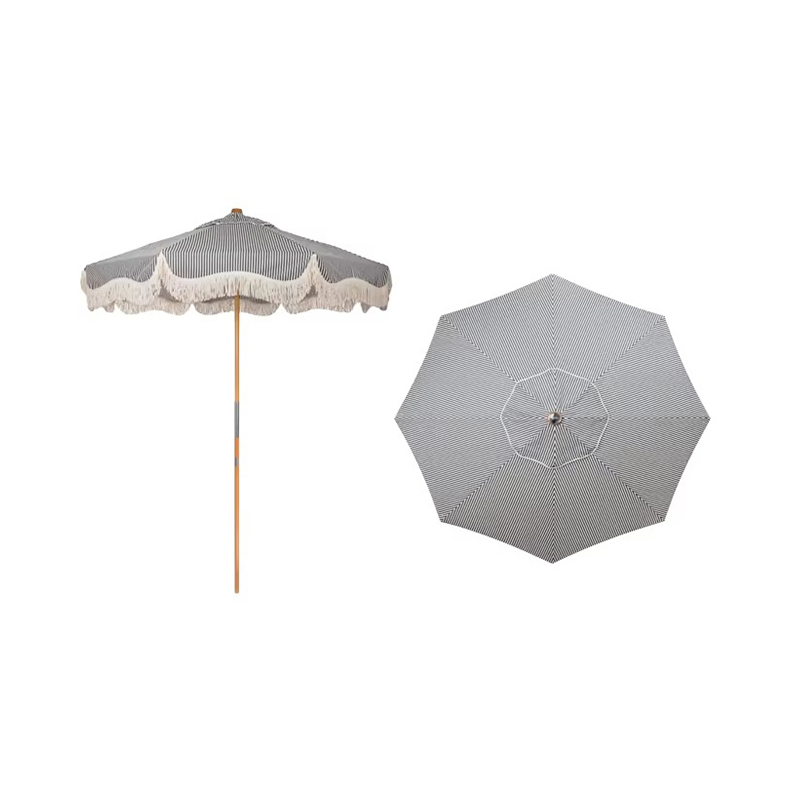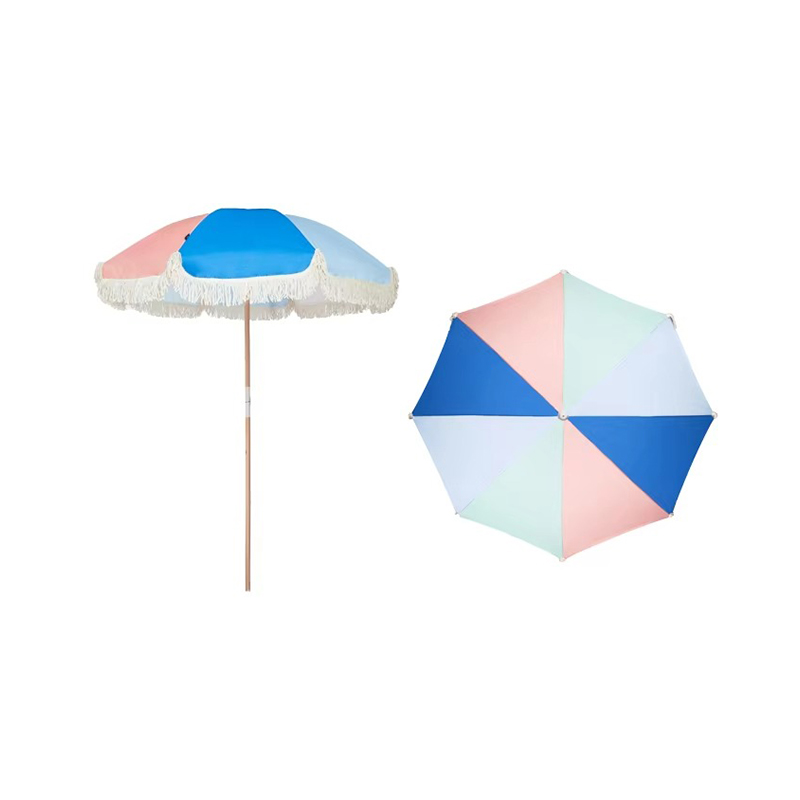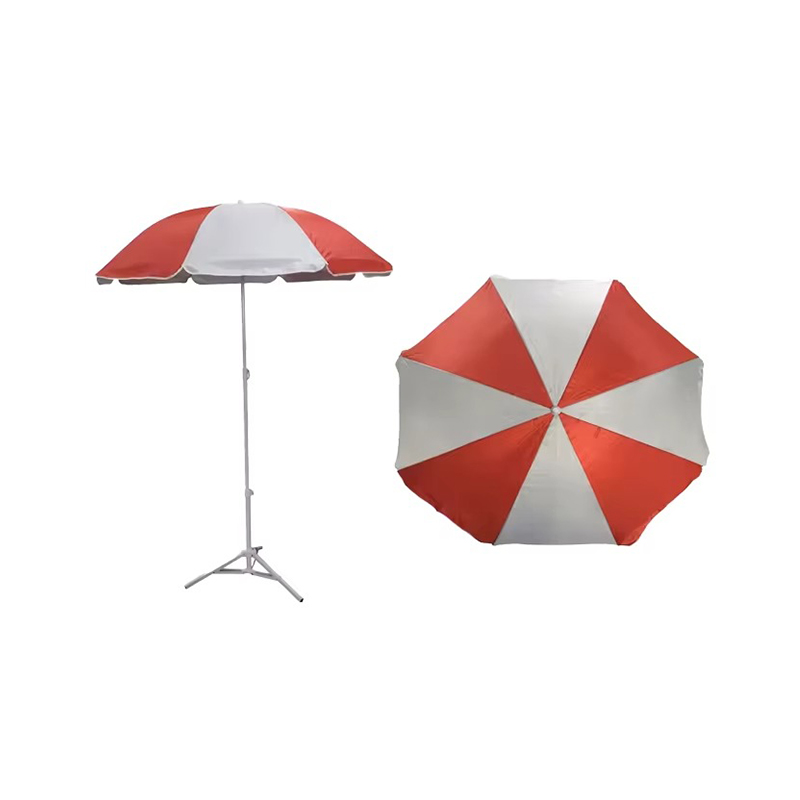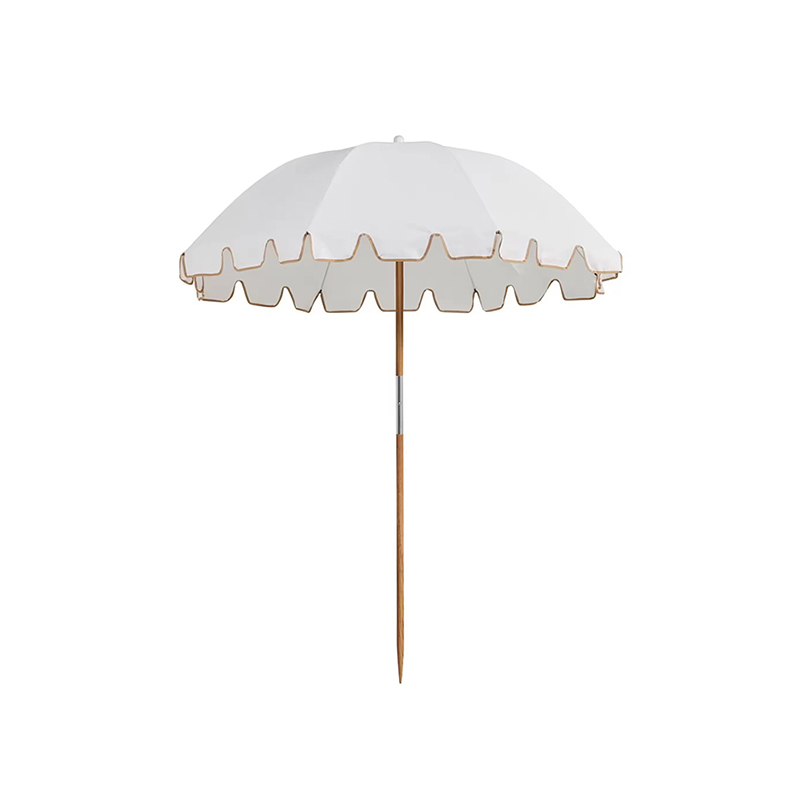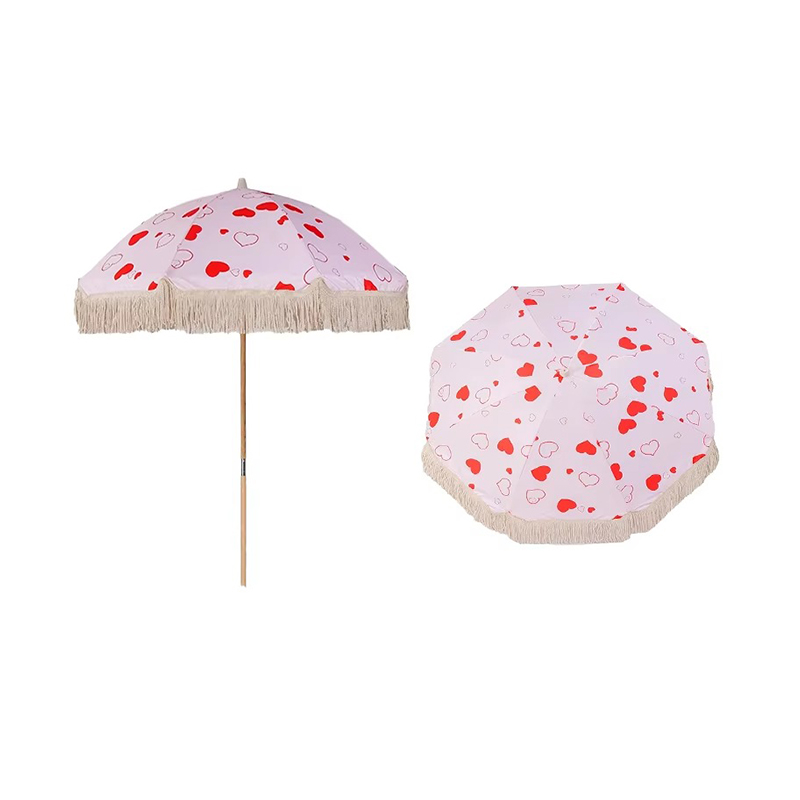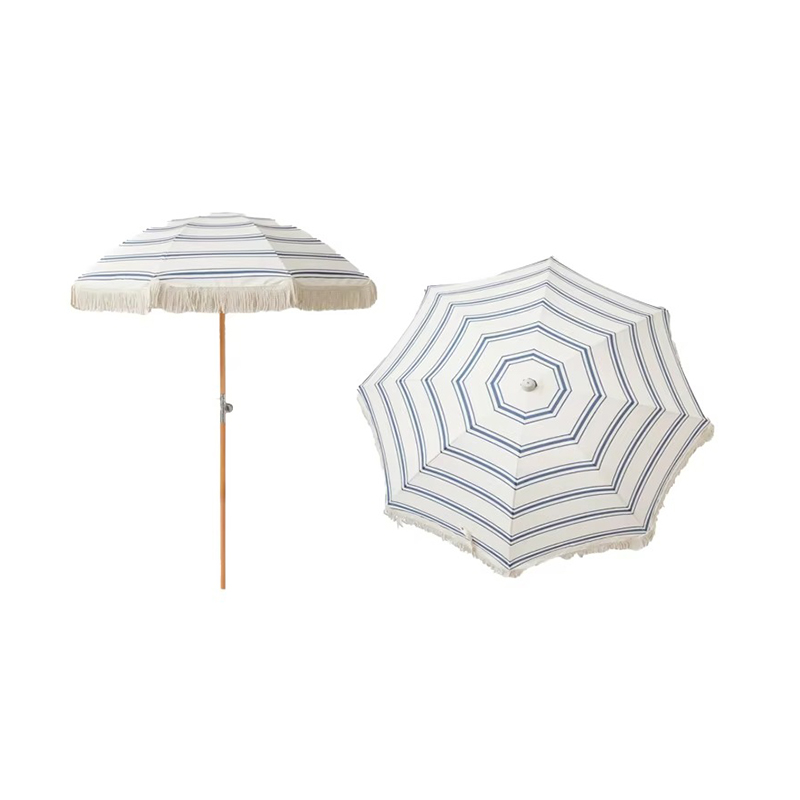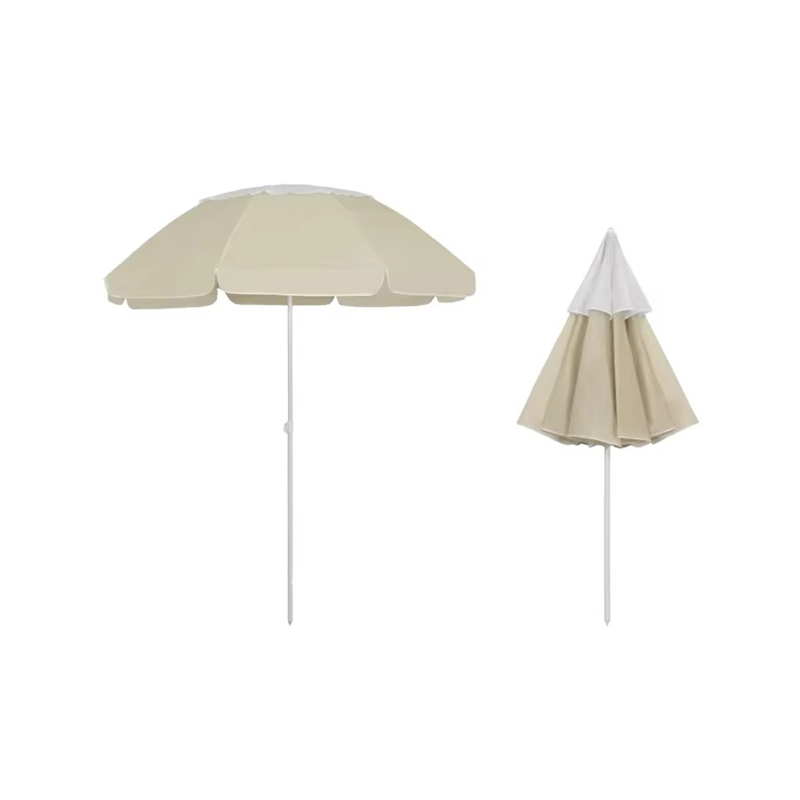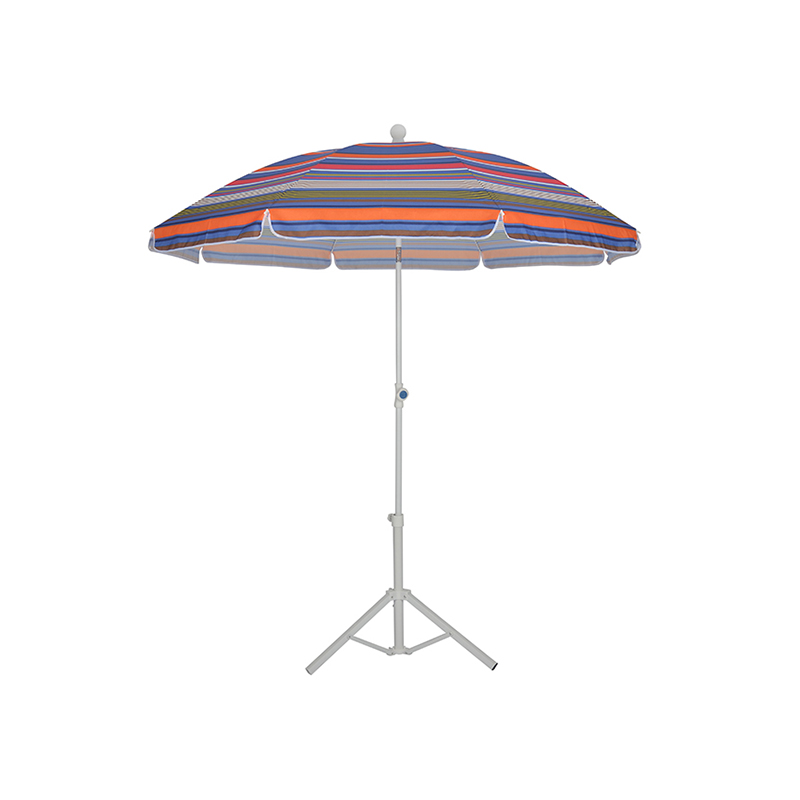Is the sun protection performance an important consideration when purchasing a beach umbrella?
Posted by Admin
The sun protection performance of beach umbrella is indeed a core consideration when choosing, but it needs to be comprehensively judged based on the usage scenario and the needs of the audience. The following is a specific point analysis:
1. The necessity of sun protection performance in different scenarios
A must-have for strong UV environments: In areas with strong UV radiation such as beaches, plateaus, and open spaces at noon, a high sun umbrella can prevent skin burns, especially for children and those with sensitive skin.
Low UV scenarios can be compromised: for short-term activities such as tree shade in urban parks and evening picnics, a regular umbrella is sufficient, and portability is greater than the sun protection level.
2. Practical value of sun protection performance
Anti penetration ability: High quality sun umbrellas use multi-layer polyester and coatings (such as silver glue) to block more ground reflected ultraviolet rays than single-layer cotton umbrellas.
Difference in thermal insulation sensation: Under high sun protection umbrellas, the perceived temperature is significantly lower than under ordinary umbrellas, avoiding dizziness and irritability caused by thermal radiation (especially for the elderly/children).
3. Collaborative elements beyond sun protection
Breathability balance: High density sunscreen fabric may be stuffy, so choosing a style with breathable mesh or side vents on the umbrella face is more comfortable.
Shadow coverage: The diameter and inclination angle of the umbrella surface are more important than the sun protection index - the actual shading area of a large angle umbrella under slanting sun is 50% more than that of a small umbrella.
4. Potential drawbacks of sun protection performance
The contradiction between weight and portability: thickening the sun protection layer increases the burden on the umbrella ribs, and after folding, the volume is 30% larger than that of a regular umbrella, which is not conducive to backpack hiking.
Visual interference: The inner layer of silver/black glue coating creates a dark environment under the umbrella, which some people feel suppressed. The light colored umbrella surface is brighter but has weaker sun protection.
5. Alternative solutions and remedial measures
Physical superposition method: The combination of a regular umbrella, sun protection clothing, and sun hat is more effective than a single high sun protection umbrella.
Dynamic adjustment method: detachable umbrella cloth (such as double-layer design), use sun protection layer on sunny days, remove and reduce weight on cloudy days.
Site remediation method: Plant climbing vines around umbrellas in fixed locations (such as courtyards) to naturally enhance shading.
Key points of purchasing decision:
Priority sun protection performance (choose UPF50+logo) for scenes such as infants and young children's homes, skin prone to sunburn, and seaside hiking.
Short term park picnics, cloudy weather, and the lightweight needs of backpackers → focus on portability and ventilation.
Balance strategy: Choose a style with sunscreen coating on the outer layer of the umbrella top, which not only reflects ultraviolet rays, but also maintains transparency with light colored fabric on the inner layer.
| Consideration | High Sun Protection Priority | Lower Sun Protection Priority | Key Notes |
| Scenario Demand | • Midday beach/high-altitude use• Users with sensitive skin/children | • Shaded parks/evening picnics• Short-term urban use | Assess UV exposure duration & intensity first |
| Core Performance | Blocks ground-reflected UV with dense weave + silver coating | Basic shade from single-layer fabric | UPF50+ fabric rejects 98% UV rays; color matters (dark > light) |
| Comfort Trade-offs | May reduce airflow → opt for vented canopies | Lighter weight; better ventilation | Balance with side airflow vents if choosing high protection |
| Shade Coverage | Large tilted canopy > small "perfect" UPF | Adjustable tilt crucial for moving sun | 8ft+ diameter ideal; angle blocks low sun |
| Alternative Solutions | Layered approach: UPF umbrella + sun sleeves + hat | Regular umbrella + SPF 50+ sunscreen | Combine methods when protection is critical |
| Limitations | • Heavier/bulkier• Dark interiors may feel gloomy | • Insufficient for harsh sun• Higher reapplication of sunscreen | Test umbrella weight when packed if portability needed |


